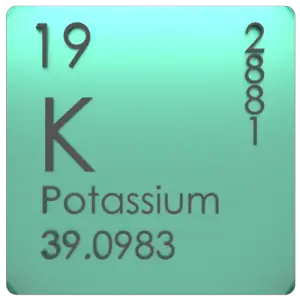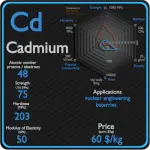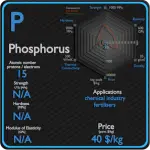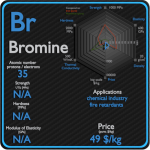This article contains comparison of key thermal and atomic properties of lithium and potassium, two comparable chemical elements from the periodic table. It also contains basic descriptions and applications of both elements. Lithium vs Potassium.

Lithium and Potassium – About Elements


Source: www.luciteria.com
Lithium and Potassium – Applications
Lithium
Lithium has many applications, from lubricating grease, alloying additions in particular for aluminium and magnesium alloys, to glazes for ceramics, and finally, lithium batteries. In particular, lithium is and will continue to play an increasingly important role in the battery-powered clean air future. Lithium batteries are widely used in portable consumer electronic devices, and in electric vehicles ranging from full sized vehicles to radio controlled toys. The term “lithium battery” refers to a family of different lithium-metal chemistries, comprising many types of cathodes and electrolytes but all with metallic lithium as the anode.
Potassium
Potassium (K) is an essential nutrient for plant growth. It’s classified as a macronutrient because plants take up large quantities of K during their life cycle. Agricultural fertilizers consume 95% of global potassium chemical production, and about 90% of this potassium is supplied as KCl. Due to its high degree of reactivity, pure potassium is rarely used in its elemental /metallic form. It is used as a powerful reducing agent in organic chemistry. Potassium/Sodium alloys are It used as a heat exchange medium . The heat in the potassium warms water and makes it hot enough to boil. Then water is changed into steam, which is used to work devices that generate electricity.
Lithium and Potassium – Comparison in Table
| Element | Lithium | Potassium |
| Density | 0.535 g/cm3 | 0.856 g/cm3 |
| Ultimate Tensile Strength | 1.5 MPa | N/A |
| Yield Strength | N/A | N/A |
| Young’s Modulus of Elasticity | 4.9 GPa | 3.53 GPa |
| Mohs Scale | 0.6 | 0.4 |
| Brinell Hardness | 5 MPa | 0.36 MPa |
| Vickers Hardness | N/A | N/A |
| Melting Point | 180.5 °C | 63.25 °C |
| Boiling Point | 1342 °C | 760 °C |
| Thermal Conductivity | 85 W/mK | 102.4 W/mK |
| Thermal Expansion Coefficient | 46 µm/mK | 83 µm/mK |
| Specific Heat | 3.6 J/g K | 0.75 J/g K |
| Heat of Fusion | 3 kJ/mol | 2.334 kJ/mol |
| Heat of Vaporization | 145.92 kJ/mol | 79.87 kJ/mol |















